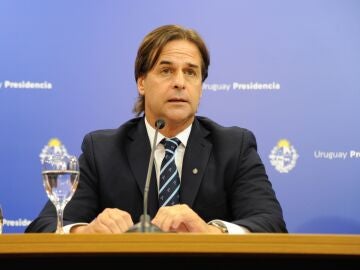
The drought in UruguayFar from improving, it has gotten worse. On June 19, the Uruguayan government decreed the water emergency for the Montevideo area and its surroundings, whose running water supply has been affected since May by a prolonged drought.
The goal was “to have faster legal processes and simpler” regarding a work that will enable another source of drinking water, explained then the president of Uruguay, Luis Lacalle Pou. The Secretary of the Presidency, Álvaro Delgado, has recently ruled on the work, assuring that it will be finished in a couple of weeks, as planned.
For his part, the President Luis Lacalle Pou has ensured that the government is arranging reservations of drinking water as best they can. “If it doesn’t rain, there will be a period in which the water is not drinkable,” she said. Meanwhile, the water reserves of the capital they are below 2%, a figure that would last 7 days, according to data from the presidency collected by CNN.
Delgado added that the water continues to be suitable for human consumption and for other essential situations of its use, despite the fact that it is exempted by the Ministry of Public Health due to its sodium and chlorine levels.
In Uruguay the maximum values allowed are 720 milligrams of chloride per liter and 440 milligrams of sodium per liter. According to a report presented this Wednesday, three pumping lines exceed the maximum allowable chloride (739 mg/l, 792 mg/l and 710 mg/l), while sodium is exceeded in two (443 mg/l, 472 mg/l and 427 mg/l).
Source: Lasexta
Ricardo is a renowned author and journalist, known for his exceptional writing on top-news stories. He currently works as a writer at the 247 News Agency, where he is known for his ability to deliver breaking news and insightful analysis on the most pressing issues of the day.











